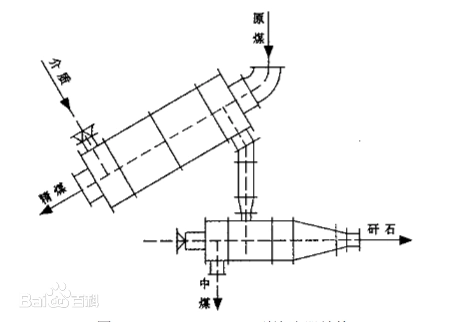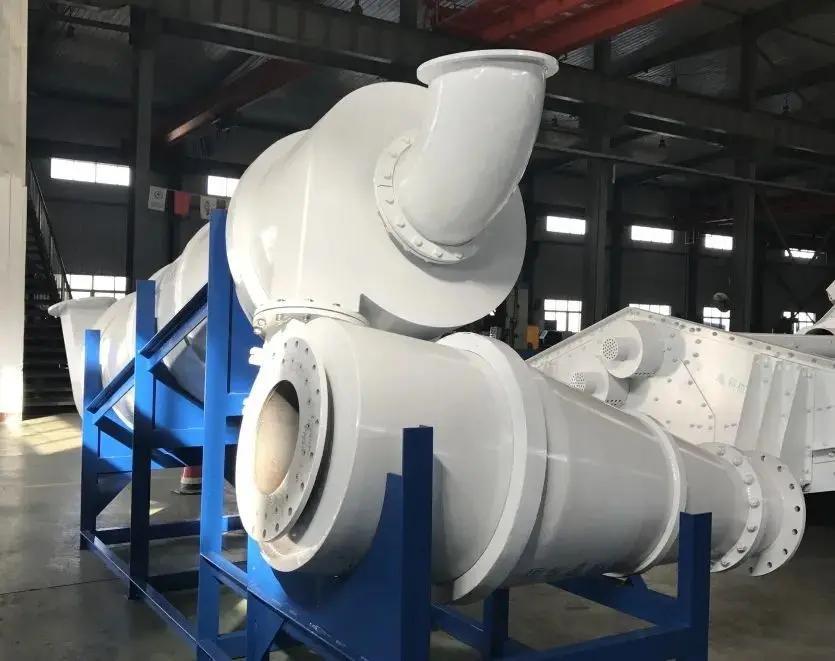In coal washing plants, the wear and tear of heavy media cyclones pose a prevalent issue. Serving as a core component, the heavy media cyclone segregates coal of varying densities. However, prolonged and intense operations often lead to wear in the cyclone's inner cylinder. This not only impacts the precision and efficiency of coal selection but also escalates maintenance and replacement costs. Consequently, addressing wear in heavy media cyclones has become a pressing concern for coal washing plants.
Understanding Heavy Media Cyclones Wear Mechanism
The wear primarily occurs within the inner cylinder and cone of the heavy media cyclone. During the coal selection process, materials and suspension fluids enter the cyclone, generating a robust rotational flow. Under centrifugal force, lighter coal particles are propelled towards the cyclone's inner wall while heavier particles move towards its center. Throughout this process, materials vigorously impact and abrade the inner cylinder, leading to wear. Additionally, hard particles within the materials contribute to cutting wear on the inner cylinder.

Strategies to Prevent Wear
To address the wear in heavy media cyclones, several measures can be undertaken:
Optimizing Cyclone Design
Enhancing the cyclone's design can reduce material impact and friction on the inner cylinder. Altering parameters such as inlet/outlet angles, overflow weir height, and bottom outlet diameter can mitigate rotational speed and impact force.
Utilizing Wear-Resistant Materials
Manufacturing the cyclone's inner cylinder with wear-resistant materials can enhance its durability. High-strength, wear-resistant steel or ceramics can be employed for this purpose.
Adding Protective Layers
Introducing a protective layer on the cyclone's inner cylinder surface can minimize direct material friction. This could involve applying wear-resistant coatings or rubber layers to safeguard the inner cylinder.
Regular Inspection and Maintenance
Regularly inspecting and maintaining the cyclone can promptly address wear issues. Periodic checks on the inner cylinder's wear condition and timely replacement of severely worn components are crucial preventive actions.

Conclusion
Addressing wear in heavy media cyclones necessitates a multifaceted approach. Optimizing cyclone design, utilizing wear-resistant materials, adding protective layers, and conducting regular inspections and maintenance measures can effectively mitigate wear problems in cyclones. Wear-resistant ceramics, primarily composed of alumina, exhibit a hardness exceeding HRA88, offering excellent protective properties. After sintering, it transforms into alpha-alumina, displaying stable chemical properties, non-conductivity, and resistance to chemical and electrochemical corrosion, providing effective protection against cutting, fatigue, and corrosion wear. Sanxin New Materials' wear-resistant ceramics have gained recognition from numerous coal washing plants for their outstanding performance through practical application and time-tested verification.
Unique FAQs
Q: Can wear in heavy media cyclones be entirely eliminated?A: While complete elimination is challenging, preventive measures significantly reduce wear.
Q: Are there specific materials best suited for constructing cyclone inner cylinders?A: High-strength wear-resistant steel or ceramics are commonly employed for enhanced durability.
Q: How often should a heavy media cyclone undergo maintenance checks?A: Regular checks, preferably at intervals of a few months, are recommended to detect wear early.
Q: Is wear primarily caused by the rotational flow within the cyclone?A: Yes, the intense rotational flow induces impact and friction, contributing to wear.
Q: Besides wear, what other issues can affect heavy media cyclones?A: Blockages due to debris or improper fluid flow can also impede cyclone performance.

Submit your demand,
we will contact you ASAP.

Sanxin New Materials Co., Ltd. focus on producing and selling ceramic beads and parts such as grinding media, blasting beads, bearing ball, structure part, ceramic wear-resistant liners, Nanoparticles Nano Powder

